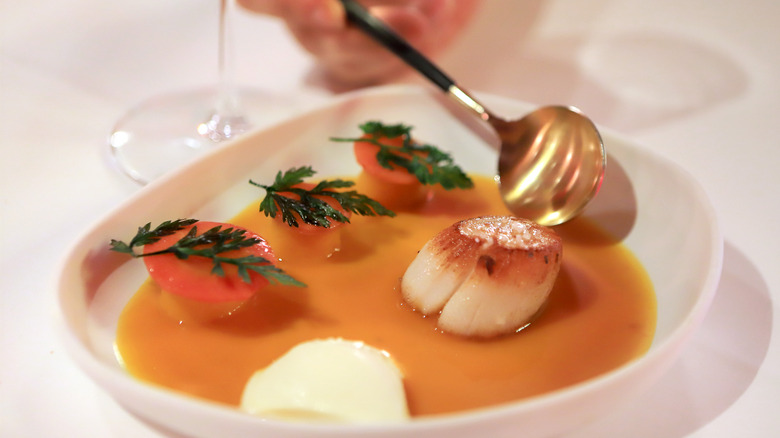The 5 Qualities Michelin Inspectors Use To Judge Every Restaurant
We often gloss over the seemingly random connection that the name attached to the world-renowned, highly-esteemed Michelin Guide is that of a tire company — but the guide in fact originated as a marketing tactic to increase sales by getting more drivers on the road, giving them helpful travel information, via Michelin Guide.
Company history chronicles that after including well-received restaurant recommendations in the guide, the Michelin brothers began to recruit "mystery diners" to inspect and review different restaurants. In 1926, they started awarding stars to those considered fine dining establishments, and 10 years later, the Michelin Guide hierarchy star system and its corresponding criteria were born.
Today, the Michelin Guide rates and reviews over 30,000 restaurants across three continents. Well over 3,000 establishments are currently awarded 1, 2, or 3 stars. So what exactly are the criteria that determine whether a restaurant makes the Michelin cut? Hint: it has nothing to do with car tires.
Michelin criteria all comes down to the food
If you've ever had the pleasure of dining at a Michelin-Star restaurant, you know that the experience is so special because of the food itself: every detail of every expertly crafted dish. So it's no surprise that the criteria that all Michelin inspectors use to assess each restaurant focus on the food, and only the food.
According to the Michelin Guide, there are five points that restaurant inspectors take into account — applied only to the cuisine itself, and intended to unify the judging system across the globe — in order to determine if an establishment is worthy of a star (or two, or three).
One point addresses the quality of ingredients. Obvious, but important — because a dish is only as good as what's in it, and fresh, locally-sourced, high-quality ingredients speak volumes. The second point addresses the culinary techniques used and the mastery and expertise required to successfully execute the dishes. The third point addresses the harmony of the flavors throughout each dish and the entire meal; how well everything goes together for a seamless taste journey. The fourth point addresses the personality that the chef brings to the dishes and whether the appearance and taste of food convey a certain level of emotion or creativity. And the fifth point focuses on consistency, both throughout the menu choices as a whole and across different visit experiences, to ensure that any excellence is lasting.
Michelin-Star restaurants that your wallet can handle
When we think of a Michelin-Star restaurant, we tend to envision an elaborate, expensive tasting menu, with ingredients you've never heard of, delivered to you in some elegant, pretentious building in the most drop-dead-gorgeous form possible. But what's great about the Michelin Guide is that its judging criteria are solely applied to the food and nothing else about the establishment, which means any kind of restaurant can be awarded the prestigious star — no matter the ambiance, the environment, the location, the type of cuisine, or the prices.
That means there are plenty of affordable Michelin-Star restaurants to visit. At Claro in New York, you can get a three-course Michelin-Star brunch for $48. State Bird Provisions in San Francisco offers a very reasonable menu, where currently the most expensive item is $36 but most options are well under $25. And perhaps the winner: the unassuming Hill Street Tai Hwa Pork Noodle in Singapore. This tiny, hole-in-the-wall place inside a hawker center (essentially an open-air food court) serves up street food, offering Michelin-worthy bowls of noodles for $6 a pop.


